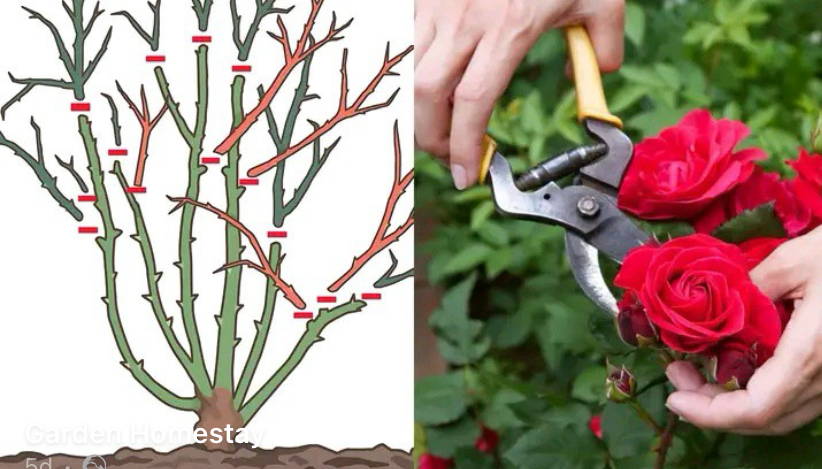1. Choose the Right Time
Prune in late winter or early spring, just as new growth begins, typically after the last frost when buds start to swell.
2. Gather Your Tools
Use sharp bypass pruners, long-handled loppers, gardening gloves, and disinfectant for clean and safe pruning.
3. Identify and Remove Dead or Diseased Wood
Cut out any dead, damaged, or diseased wood. Dead wood is brown and dry; healthy wood is green inside. Cut back to healthy tissue.
4. Cut Back to Outward-Facing Buds
Make cuts 1/4 inch above an outward-facing bud at a 45-degree angle to encourage outward growth and prevent water retention.
5. Thin Out Crowded Areas
Remove crossing or rubbing branches to improve airflow and light penetration, aiming for an open, vase-like shape.
6. Shape the Plant
Prune for a balanced, symmetrical form, removing weak or spindly growth to focus energy on stronger branches.
7. Feed and Mulch
After pruning, feed roses with balanced fertilizer and apply mulch to retain moisture, suppress weeds, and regulate soil temperature.
Additional Tips for Success
Prune Regularly: Remove spent blooms throughout the growing season to encourage continuous flowering.
Know Your Rose Type: Different roses require different pruning techniques; for example, hybrid teas need more severe pruning than climbers.
Disinfect Tools: Clean tools with disinfectant between cuts, especially when dealing with diseased plants, to prevent pathogen spread.
